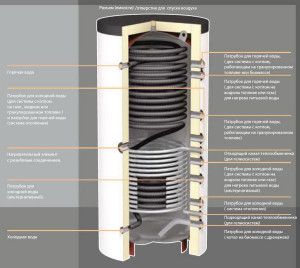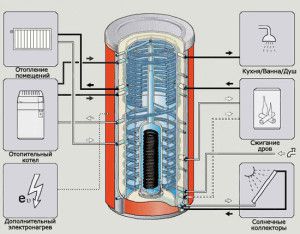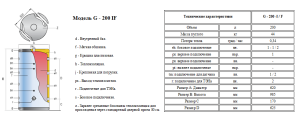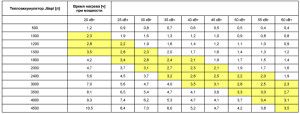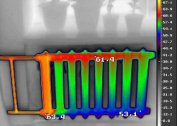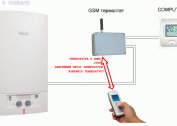How to reduce the constant costs of maintaining a comfortable temperature in the house? There are many truly effective methods, ranging from installing boilers with the highest possible efficiency and ending with the installation of alternative sources of heat. But one of the most productive is considered a heat accumulator for heating systems.
Buffer tanks for heating
In autonomous heating circuits, the boiler is always provided with constant operation. This entails an increase in energy costs and a decrease in the service life of expensive equipment due to wear and tear. The battery for heating is designed to optimize the operation of the entire system.
Assignment of buffer tanks
It is a container, inside which passes the heating main. The heat transferred from the pipes to the water in the tank heats it. When the boiler is turned off, the coolant temperature decreases and the reverse process begins - thermal energy comes from the water in the tank through the walls of the coolant pipes. In this way, heat accumulators in heating systems allow maintaining a comfortable heating level for a long time after the boiler stops.
Why aren't tanks for heating batteries installed in every autonomous system? There are a number of specific factors that must be taken into account before installation:
- Volume. To maintain the temperature in a house with an area of 120 m² for 10-12 hours, a capacity of 1.5-1.8 m³ is required. It is not always possible to place a similar water battery for heating in the system;
- Cost. The average price of a buffer capacity of 750 liters. is about 90 thousand rubles. In fact, it turns out that the heat accumulator in the heating system will be the most expensive element.
The latter is the main reason not to put a thermal buffer capacity. But if you make approximate calculations of efficiency, it turns out that heating with a heat accumulator requires 10-15% less energy (gas, firewood, coal, etc.) in comparison with the traditional scheme.
The diameter of the connected tank nozzles must match the dimensions of the system piping. Otherwise, excessive hydraulic resistance will occur.
Heat accumulator design
Self-made battery for heating at home will not bring the desired result. This is due to the specifics of the design and the materials used. To make such a tank from improvised means without the use of special equipment is almost impossible.
In addition to the main function of heat storage, most manufacturers try to improve the design so that the heating system with a heat accumulator can be involved in other areas of life support of a private house:
- Hot water supply. Water heated in the tank can be used as hot water - for taking a shower, washing dishes, etc. The main thing is that the tank is indirectly heated;
- A switching element for connecting alternative heat sources - solar systems, heat pumps. This heating scheme with a heat accumulator allows you to heat water in it due to the conditionally free energy of the sun. As a result - reduction of current costs;
- Connection of several boilers in one circuit. In this way, heating with a solid fuel and gas boiler can be arranged.
To reduce heat loss in heat accumulators in heating systems, two walls are provided - external and internal. The space between them is filled with insulation, most often with basalt wool. In addition, most models have an additional heat source - an electric heater. It allows you to maintain the temperature of the water in the storage tanks for heating at the right level. This also makes it possible to use the tank even when the boiler is idle, like an ordinary electric boiler.
When using alternative heat sources, it is recommended to purchase a tank with two piping circuits.
Calculation of the heat accumulator of heating
In practice, you first need to calculate the optimal amount of water battery for heating. There is a misconception that the higher this indicator is, the better. But when the critical volume is exceeded, the rate of heating the water in the tank decreases significantly and it simply does not have time to reach the required temperature. This is especially true for systems with maximum heating of the coolant to 60 ° C (low temperature heating).
The main condition for the functioning of heating with a heat accumulator is the maximum increase in the system when the boiler is off. Therefore, the main indicator when choosing a buffer tank according to its characteristics is the time it takes for the water heated in it to cool.
The most common errors when calculating a heating system with a heat accumulator:
- Only rated boiler power is taken into account. Allegedly enough ratio: per 1 kW of energy requires from 25 to 50 liters of capacity. But how then to take into account the coolant cooling time ?;
- System Location. The greatest efficiency is achieved only for a heating circuit with a heat accumulator, which is installed immediately after the boiler. Then the heat transfer will be optimal.
To perform the calculation, you need to know the boiler power and the thermal mode of the system. Suppose the heater generates 22 kV / h. Furthermore, the operating mode is 70/40 (70-40 = 30 ° C). In this case, the optimal amount of heat accumulator in the heating system will be:
(22 * 3600) / (4.187 * 30) = 633 kg or 0.633 m³
Now it remains to calculate the time of heating the water in the tank. Alas, there is no universal formula for this. There is a great dependence on the operational characteristics of a particular battery model for the heating system. But this data can be taken from the instructions or on the manufacturer's website. As an example, we can consider the dependence of the heating rate of the storage tank of various Wirbel capacities on the boiler output.
Given all these indicators, you can accurately calculate the estimated amount of heat accumulator in a particular heating system. More accurate calculations are done using special software systems that take into account the coolant circulation rate, heat loss and possible changes in heating modes.
Any calculation scheme should take into account the recommendations of manufacturers and the requirements for the operation of an autonomous heating system.
Installing a heat accumulator
Not only the time of heating the water in it, but also the efficiency of the entire system depends on the correct installation of a water battery in heating. The determining factor is the method of circulation of the coolant - gravity or using a pump. In the first case, the battery tanks are installed in the heating to the upper expansion tank, as close as possible to the boiler.
It should be borne in mind that the velocity of the coolant will be slightly reduced. This is due to the increase in the length of the booster pipe due to the insertion of an additional section located in the tank. For the gravitational system, it is recommended to reduce the estimated tank volume by 10-15%.
The installation location in a forced circulation system is not regulated. It is important that the level of heating of the coolant in the heating pipes with a heat accumulator is maximum. Accordingly, the tank should be located close to the boiler with the following conditions:
- The tank is placed after the security group;
- The temperature in the room where the container is located should be from 10 to 35 ° C;
- Free access to all branch pipes for repair and maintenance;
- Ability to connect both the main and the return pipe.
Most often, in heating systems with a heat storage tank, it is installed directly in the boiler room. Installation above the boiler level is not recommended.
In addition to these conditions, there may be additional ones regulated by the manufacturer. They must be taken into account not only when choosing the installation location of the tank, but to control the power of the boiler.
When installing a heat accumulator for heating systems with an electric heating element, it is recommended to additionally mount a multi-tariff electricity meter. Then you can achieve significant savings, including electric heating of the tank at night.
The video shows the principle of operation of the heat accumulator in the heating system of a private house:
